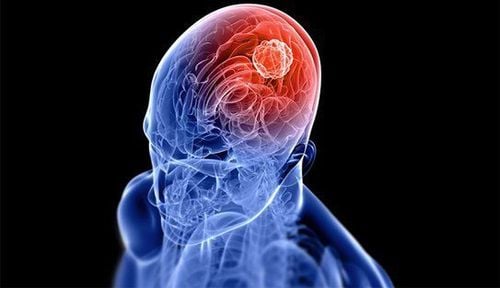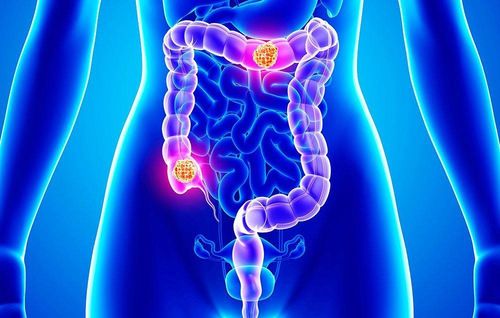This is an automatically translated article.
The article is written by Master - Doctor Mai Vien Phuong - Head of Gastrointestinal Endoscopy Unit - Department of Medical Examination and Internal Medicine - Vinmec Central Park International General Hospital.Mixed endothelial tumors of the colon and rectum are a rare entity, noted with unique histology and clinical behavior. The exact pathogenesis of these tumors remains unclear as they are often characterized by histological heterogeneity, making it impossible to make an accurate diagnosis. Despite this, an association with inflammatory bowel disease and non-neuronal mixed neuroendocrine tumors (MiNEN) has been reported.
Abbreviation: MEEN: Mixed Endocrine Epithelial Tumor; MANEC: Mixed neuroendocrine adenocarcinoma; MANET: Mixed neuroendocrine adenoma; NET 1: Grade 1 neuroendocrine tumor; NET2: Grade 2 neuroendocrine tumor; NET3: Grade 3 neuroendocrine tumor; NEC: Neuroendocrine carcinoma. MiNEN: Mixed non-neuroendocrine neoplasm.
1. Pathogenesis and genomic structure of mixed endothelial tumors
The exact pathogenesis of mixed endothelial tumors (MEENs) has been continuously debated and many theories have been proposed regarding their origin and development. Three main theories have been proposed: (1) The first proposes that the epithelial and endocytic components arise independently of distinct progenitor cells in a synchronous or heterogeneous manner; (2) The second theory proposes that two components derived from a common pluripotent stem cell ancestor acquire diploid bidirectional differentiation during carcinogenesis; (3) The third theory is similar to the second theory of origin. The last two theories are gaining popularity because it is now agreed that pluripotent gastrointestinal stem cells give rise to endocrine cells of the gastrointestinal tract, in contrast to the previous notion of genetic inheritance. from neural crest cells. The arguments supporting this claim are that amphicrine cells, which express both neuroendocrine and exocrine components in the same cell.2. Molecular pathogenesis of mixed tumors – genomic/molecular system of tumors
In an effort to understand the molecular pathogenesis of these mixed tumors, numerous reports have been produced, including an extensive review of 33 retrospective studies and 8 case reports. These reports indicate that the most common molecular feature is mutations in tumor-associated genes, including TP53, RB1, PTEN genes, adenomatous polyposis coli (APC), P13KCA, BRAF, Kristen sarcoma caused by oncogenic virus homolog (KRAS), MYC, aberrations in the p16/Rb/cyclin D1 signaling pathway and small cell instability. These are considered potential guides of MiNEN.HER2 overexpression has been reported in a rare case of mixed endocrine adenocarcinoma of the gastroesophageal junction but no such report in MINEN colorectal. Abnormalities of chromosomes 5q, 11q, 17q, and 18q were shown to be closely related to MANEC formation. The presence of transcription factors (TTF1, ASH1) has been reported, however, this does not correlate with patient prognosis and is not specific for gastrointestinal cancer. Specific transcription factors such as the basic-loop-helix-bHLH family of helix factors, including the human achaete-scute homolog (l-hASH1), are known to play an important role in The development and differentiation of neuroendocrine as well as endocrine cells of the anterior and midsection were also found to be expressed in neuroendocrine carcinoma.
Such transcriptional molecules could be a key tool to identify functional NE differentiation in mixed endocrine-exocrine carcinomas. The genome-wide copy number alterations of 14 MANECs and 5 NECs suggest repeat amplification of the PTGER4 and MYC genes as pathways for neuroendocrine differentiation. Based on a targeted next-generation panel and whole-exocrine sequencing, the neuroendocrine component compared with the epithelial component typically carries a higher number of aberrations and a higher allele balance, suggesting that a more positive biological move. Comparative exome sequencing of germline deoxyribonucleic acid from two distinct components of MANEC in the colon identified six somatic variations in cancer consensus genes.

3. Limited data on the pathogenesis of low-grade mixed neuroendocrine tumors (MANETs)
In contrast to high-grade mixed tumours, data on the pathogenesis of low-grade MANETs are limited. Low-grade endocrine tumors arise in intestinal adenomas because they are uncommon lesions. Approximately 5% of colorectal MiNENs are low-grade mixed tumors, presenting as polyps <3 cm in diameter and composed of fibrous or villi with G1-G2 NETs.Estrella et al. support evidence of changes in the APC/beta classification pathway of adenomas in 25 mixed tumors of adenomas with low-grade NETs. The presence of B-catenin expression in the nucleus both in adenomas and in NET components supports the clonal origin of the two components from a common pluripotent stem cell. The well-differentiated NET components of MiNEN appear to harbor genetic alterations different from their counterparts. Adenoma/Adenocarcinoma exhibits loss of heterozygosity for APC, KRAS and TP53 while NETs exhibit loss of heterozygosity for Von Hippel–Lindau.
In the study by La Rosa et al of 12 cases of MANET, including adenomas and well-differentiated NET G1/G2, no KRAS, BRAF or P13KCA or MSI were identified in either component of the tumor. This is corroborated by a similar study by Bongiovanni et al, that no changes were seen for the KRAS, BRAF and Pik3CA genes in either tumor components of colon MANETS. This demonstrates that intestinal MANETs can develop through a KRAS-independent pathway, in contrast to sporadic colorectal adenomas.
4. Amphicrine carcinoma
Amphicrine carcinoma is a unique entity with distinct histological and biological features. Although recognized as a distinct clinical entity in the stomach and intestines and described in the colon as part of MINEN, specific studies of amphicrine carcinoma are not available in the literature. colorectal data. Despite the clinical and systemic oncology transcriptome analysis of 10 cases in the stomach and small intestine, the genetic background of these rare tumors and their molecular relationship to adenocarcinoma were analyzed. glandular tissue/NEC is still unknown.5. Conclusion

Please follow the website: Vinmec.com regularly to update many other useful information.
Please dial HOTLINE for more information or register for an appointment HERE. Download MyVinmec app to make appointments faster and to manage your bookings easily.
References: Kanthan R, Tharmaradinam S, Asif T, Ahmed S, Kanthan SC. Mixed epithelial endocrine neoplasms of the colon and rectum – An evolution over time: A systematic review. World J Gastroenterol 2020; 26(34): 5181-5206 [PMID: 32982118 DOI: 10.3748/wjg.v26.i34.5181]













